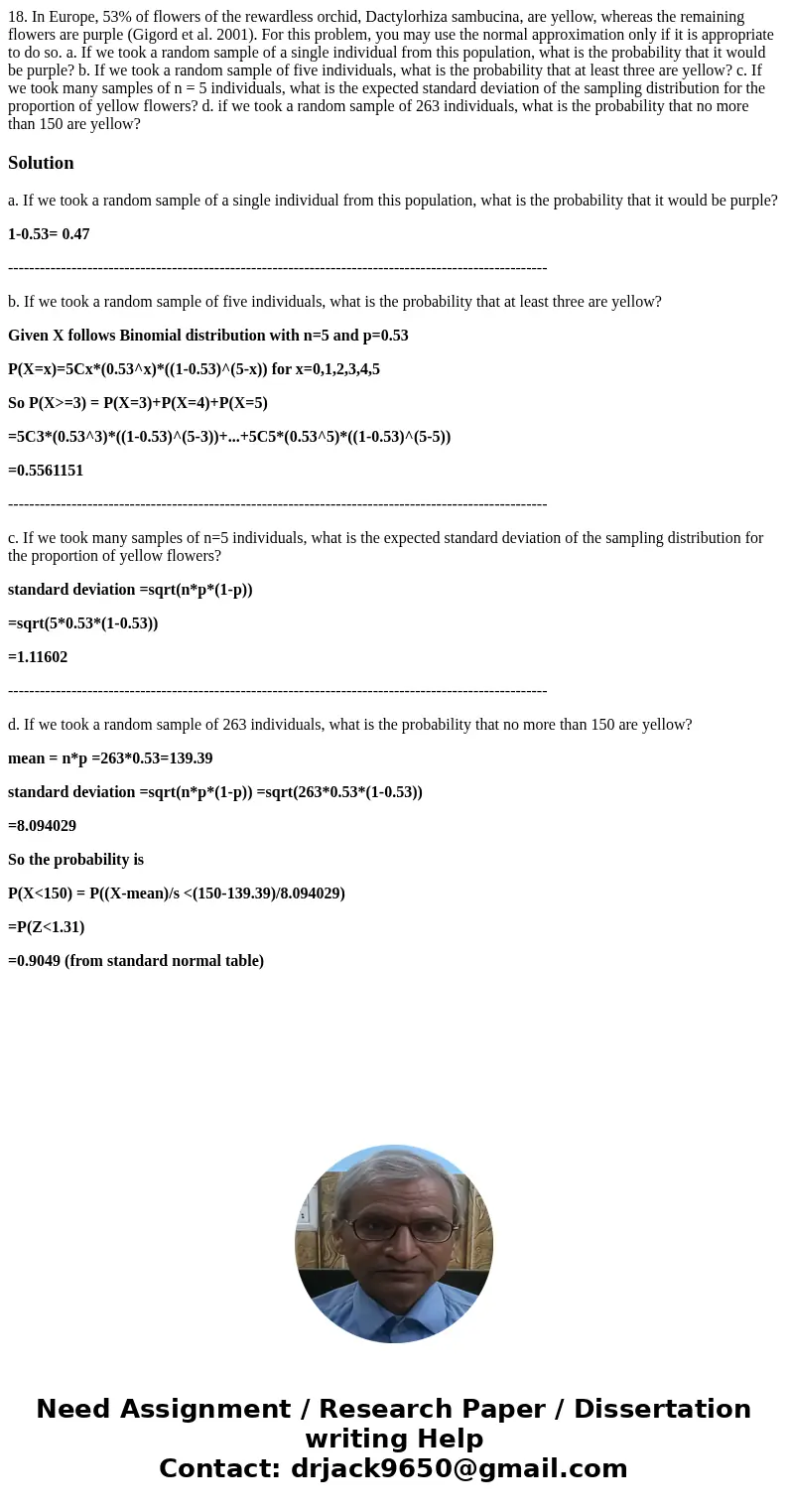18 In Europe 53 of flowers of the rewardless orchid Dactylor
Solution
a. If we took a random sample of a single individual from this population, what is the probability that it would be purple?
1-0.53= 0.47
------------------------------------------------------------------------------------------------------
b. If we took a random sample of five individuals, what is the probability that at least three are yellow?
Given X follows Binomial distribution with n=5 and p=0.53
P(X=x)=5Cx*(0.53^x)*((1-0.53)^(5-x)) for x=0,1,2,3,4,5
So P(X>=3) = P(X=3)+P(X=4)+P(X=5)
=5C3*(0.53^3)*((1-0.53)^(5-3))+...+5C5*(0.53^5)*((1-0.53)^(5-5))
=0.5561151
------------------------------------------------------------------------------------------------------
c. If we took many samples of n=5 individuals, what is the expected standard deviation of the sampling distribution for the proportion of yellow flowers?
standard deviation =sqrt(n*p*(1-p))
=sqrt(5*0.53*(1-0.53))
=1.11602
------------------------------------------------------------------------------------------------------
d. If we took a random sample of 263 individuals, what is the probability that no more than 150 are yellow?
mean = n*p =263*0.53=139.39
standard deviation =sqrt(n*p*(1-p)) =sqrt(263*0.53*(1-0.53))
=8.094029
So the probability is
P(X<150) = P((X-mean)/s <(150-139.39)/8.094029)
=P(Z<1.31)
=0.9049 (from standard normal table)

 Homework Sourse
Homework Sourse